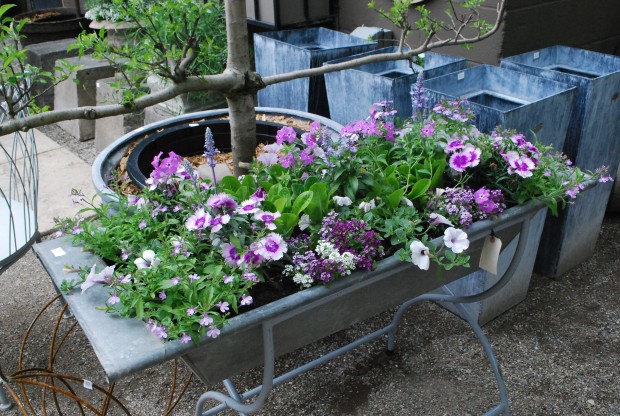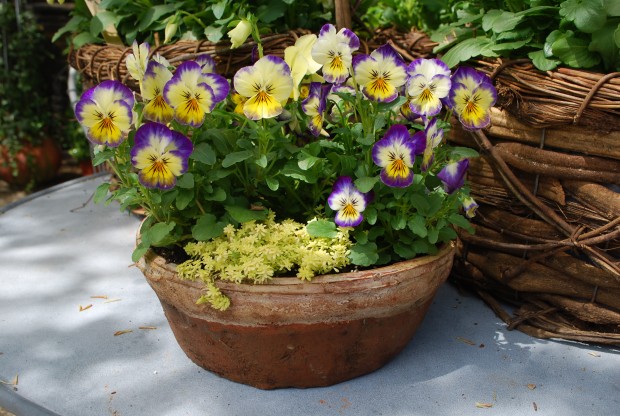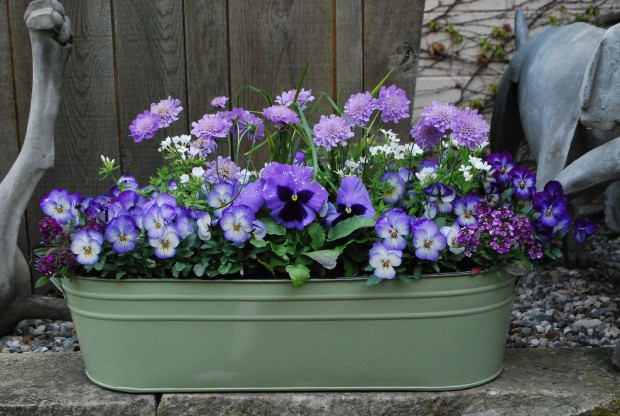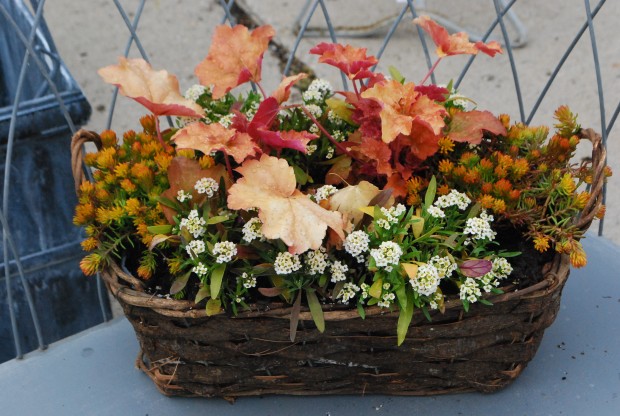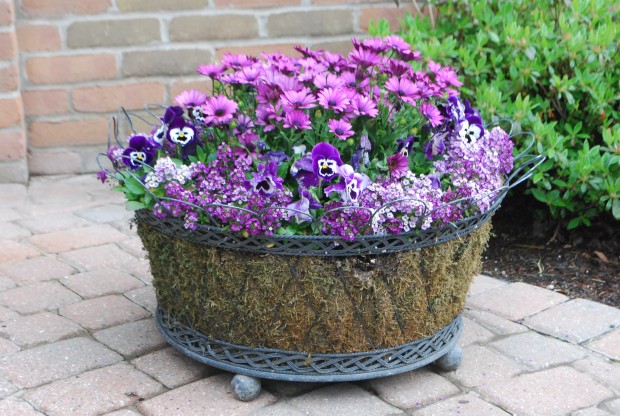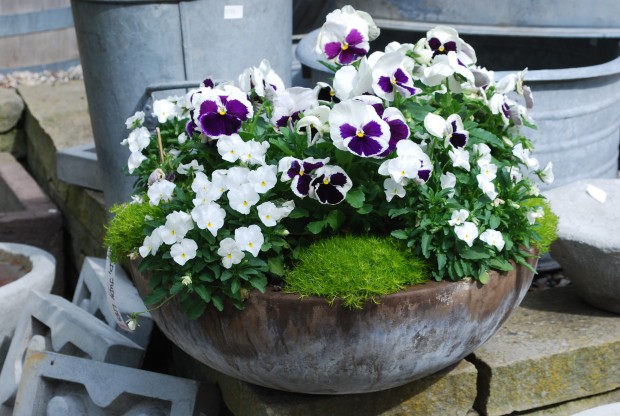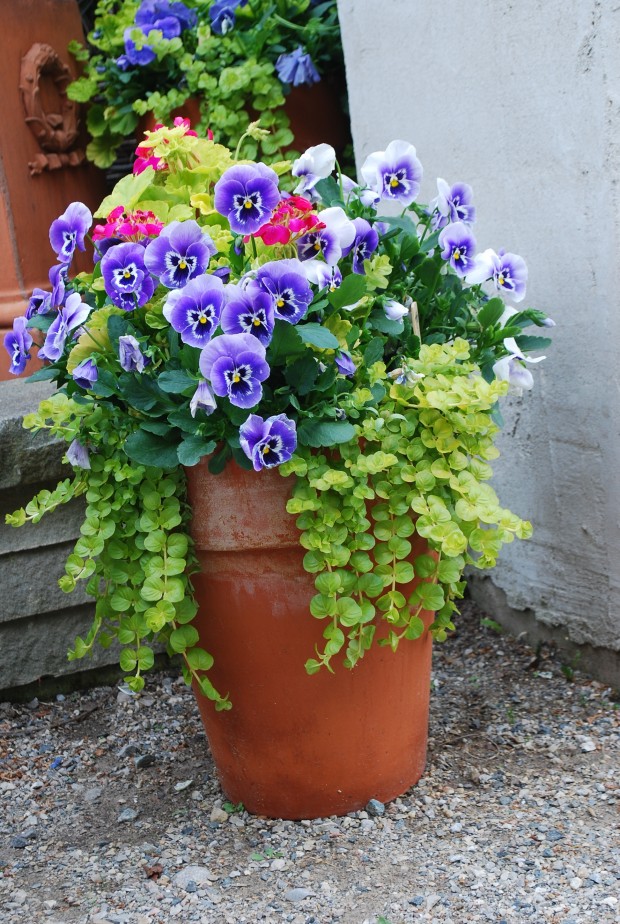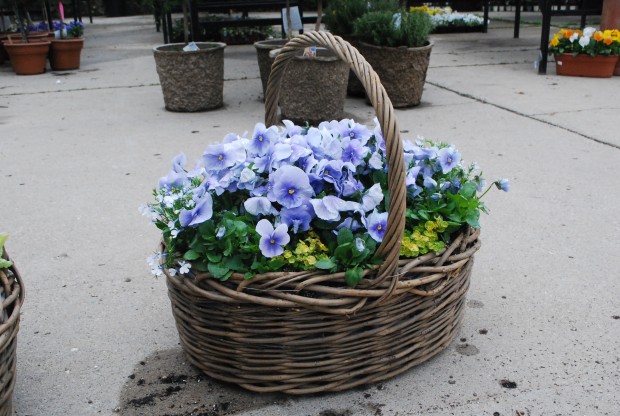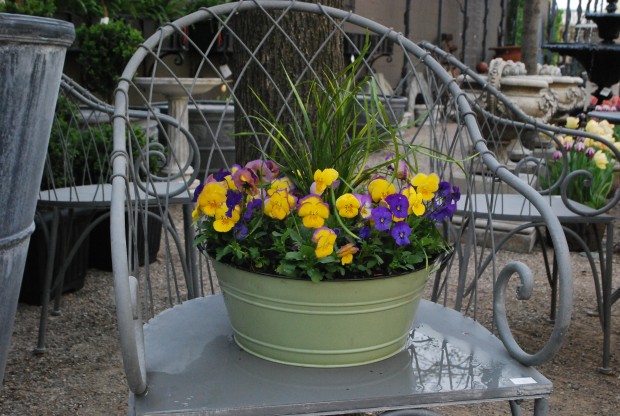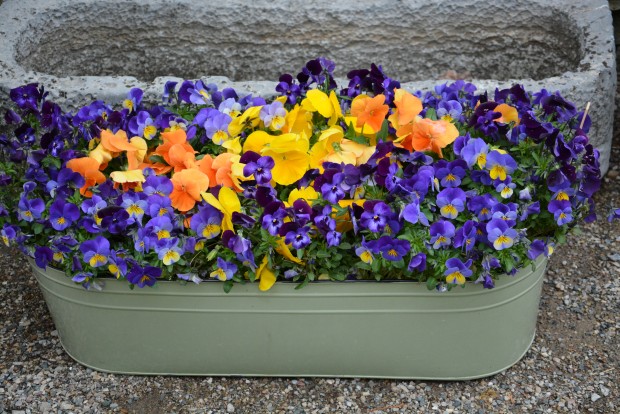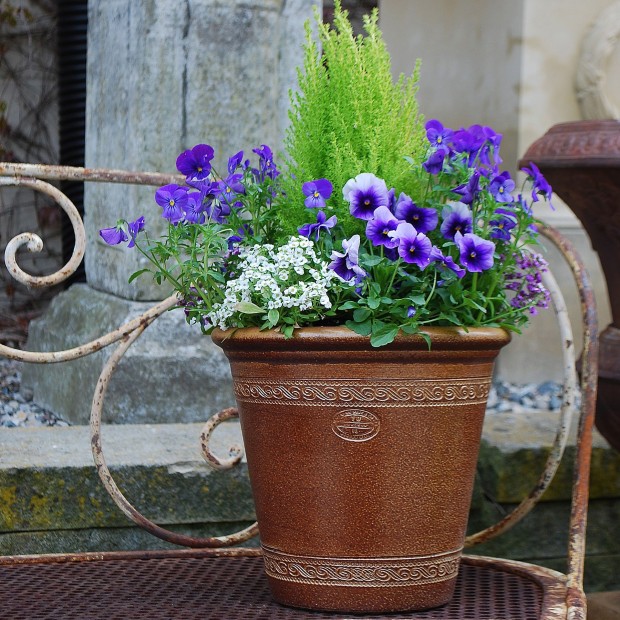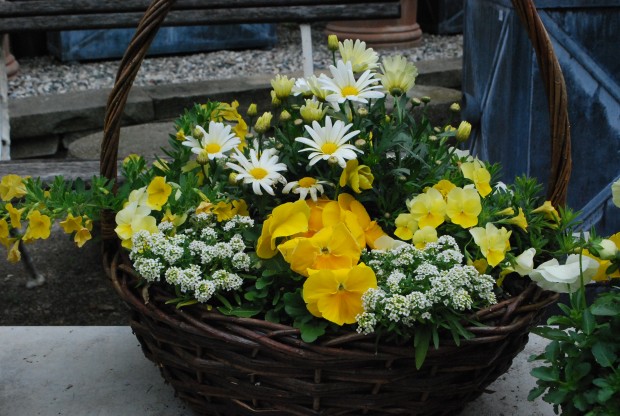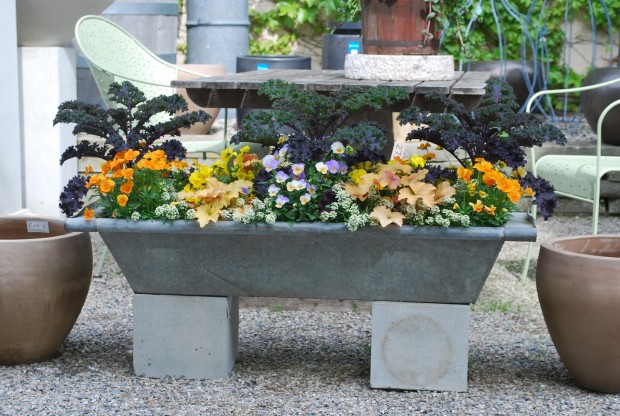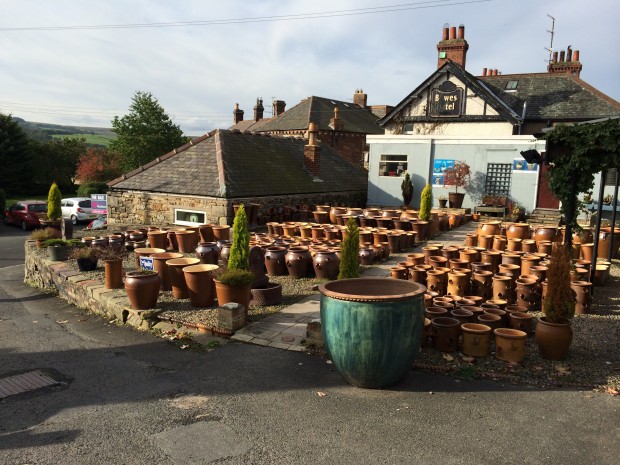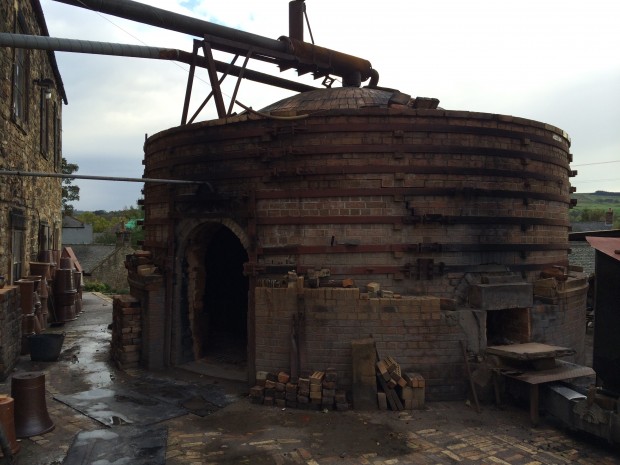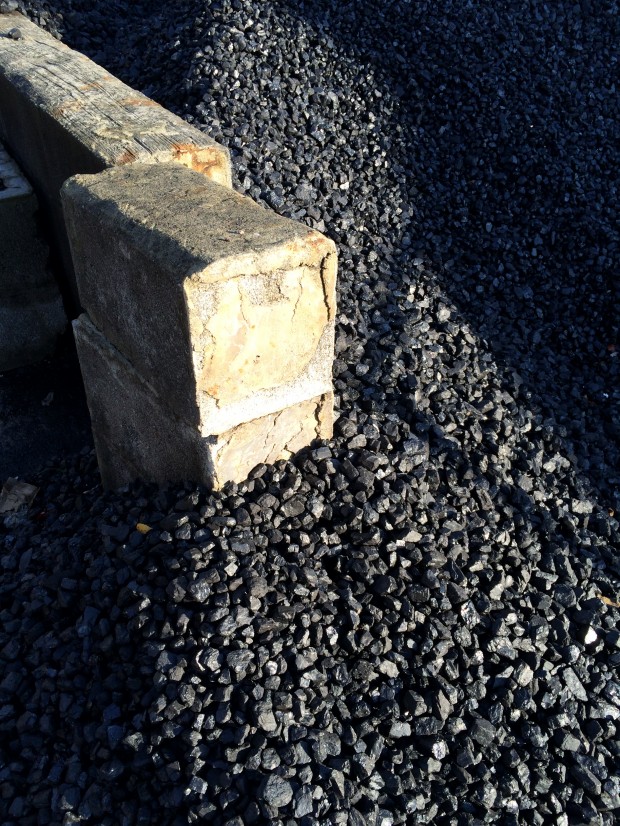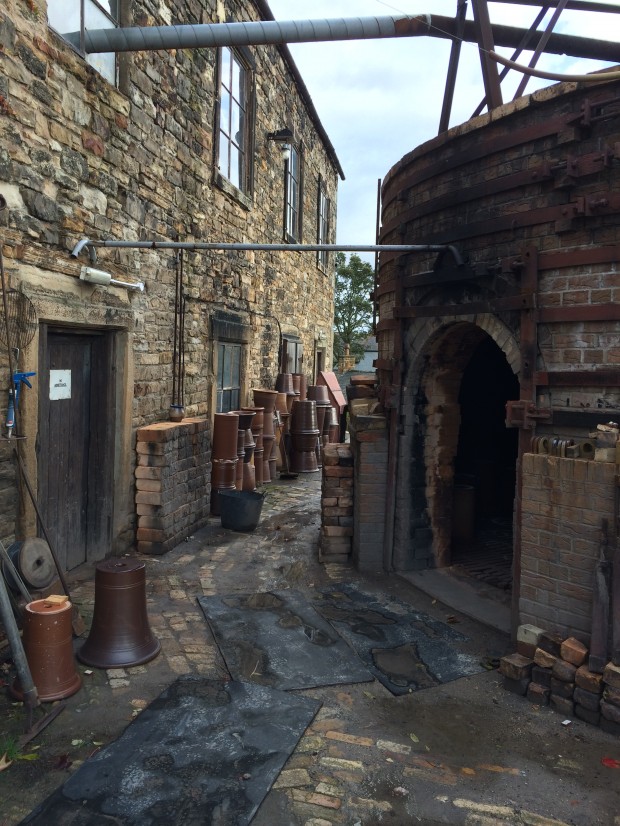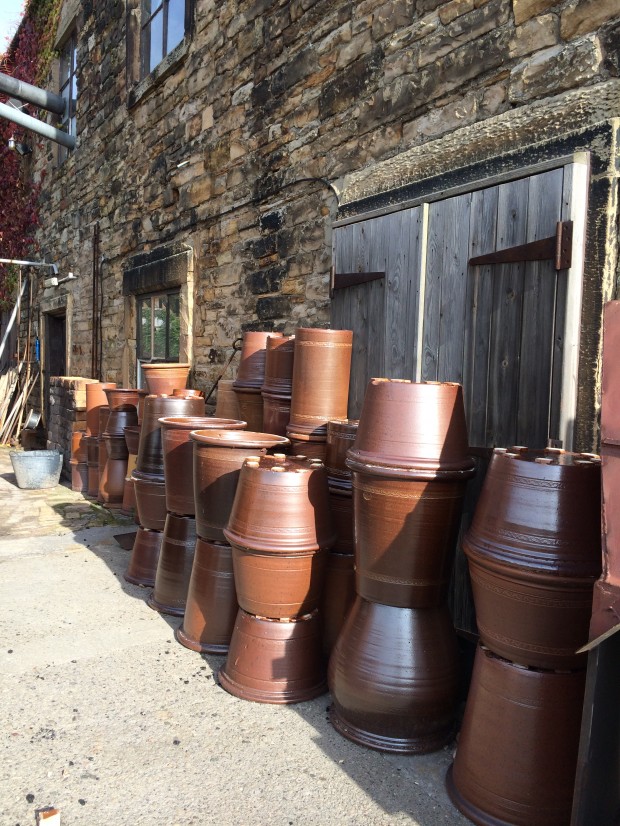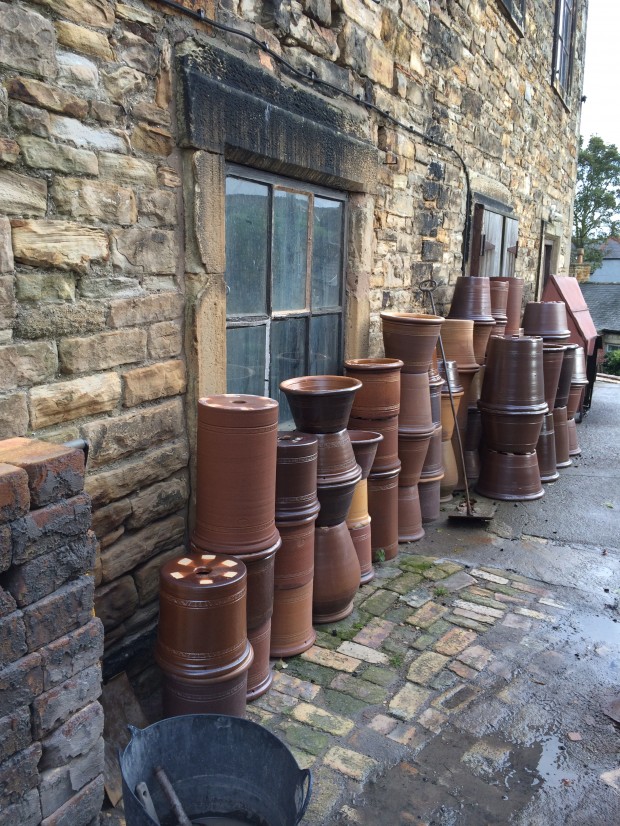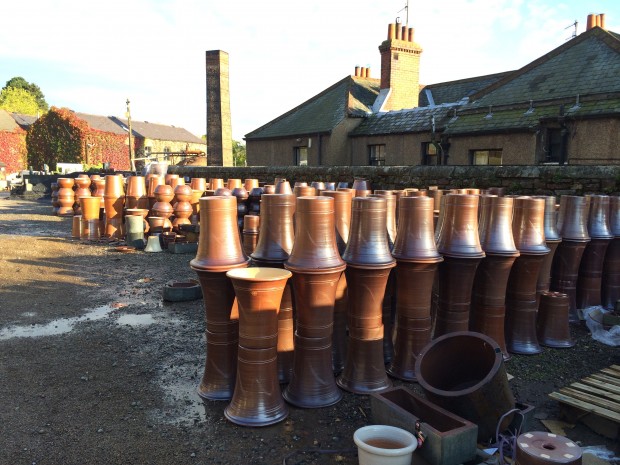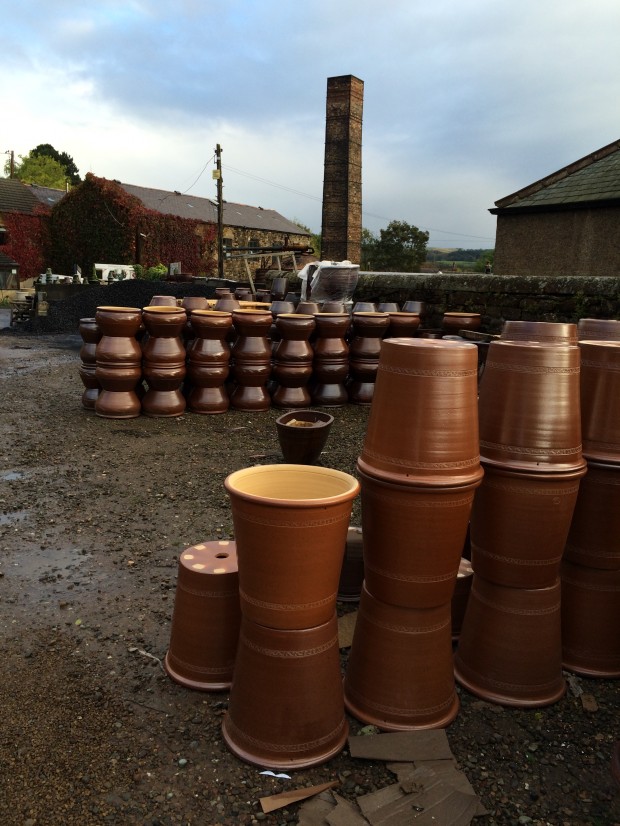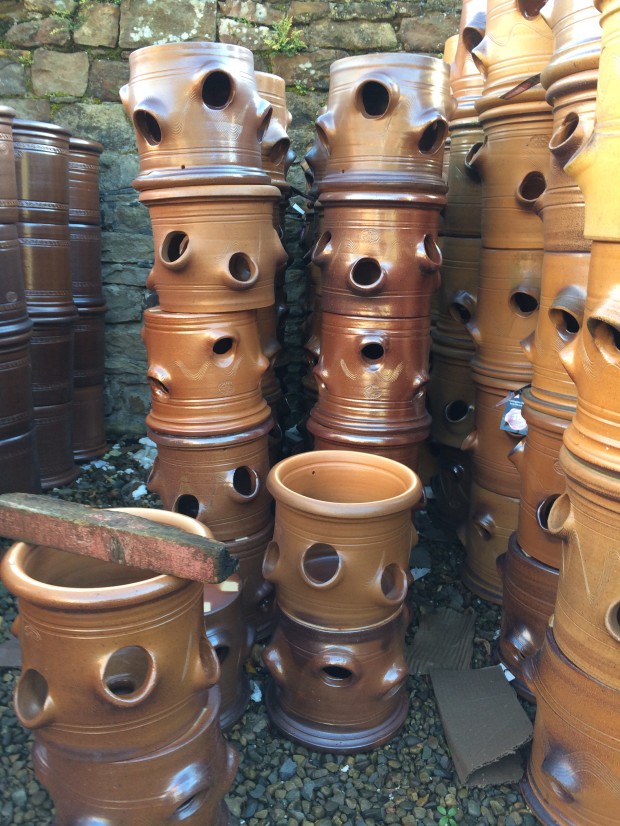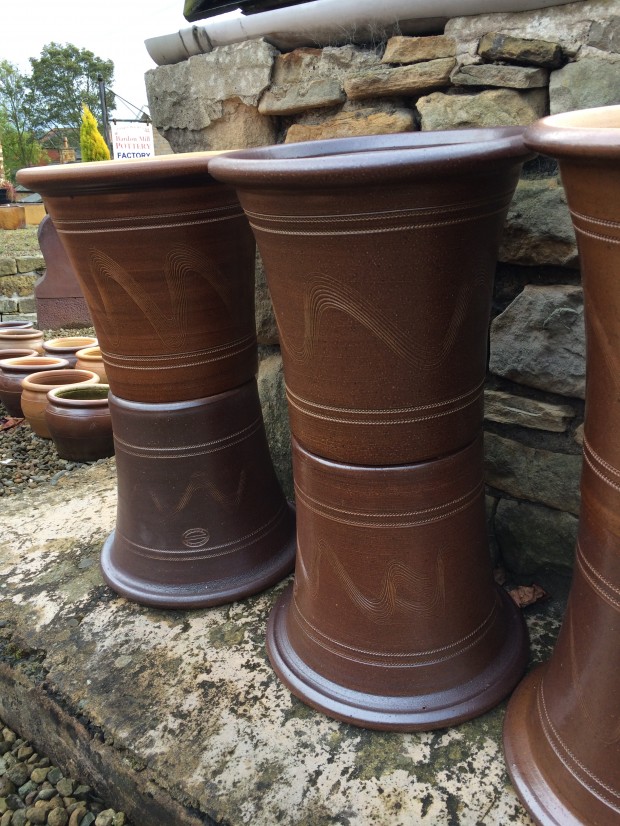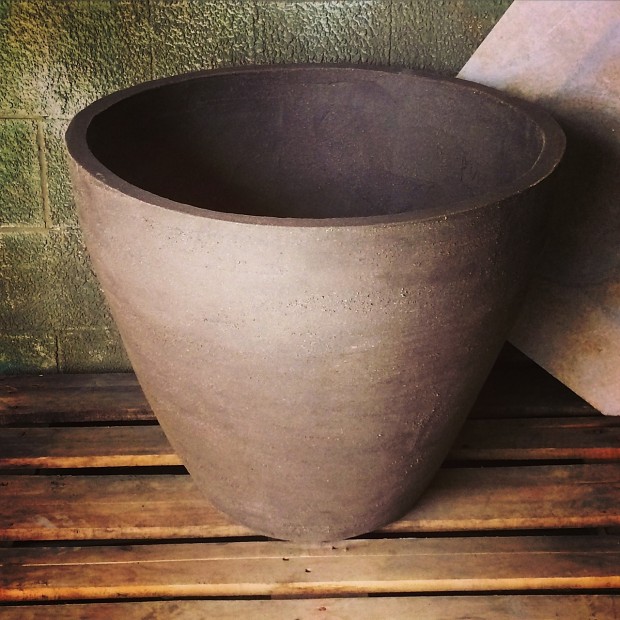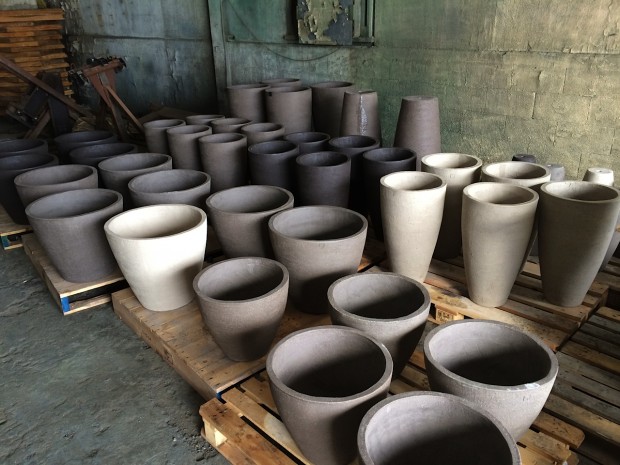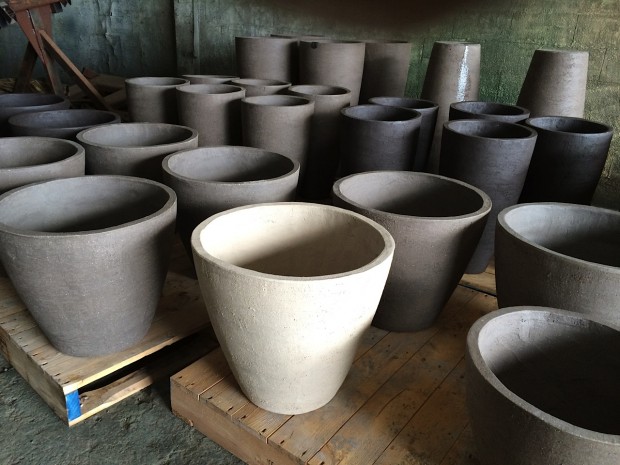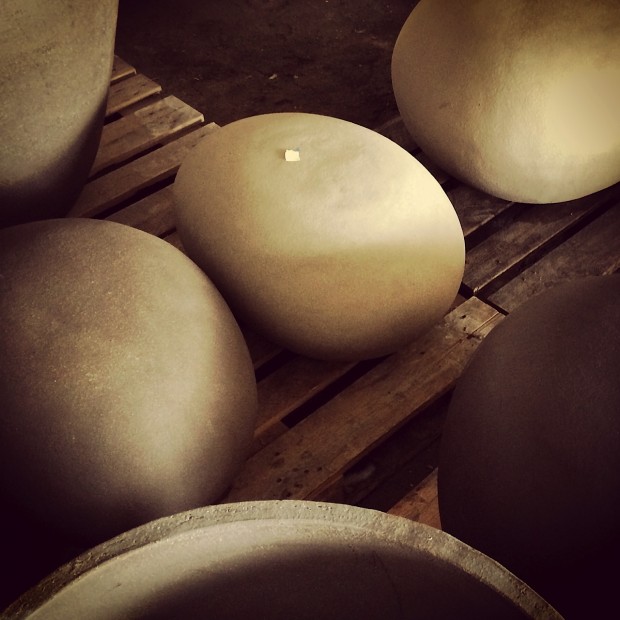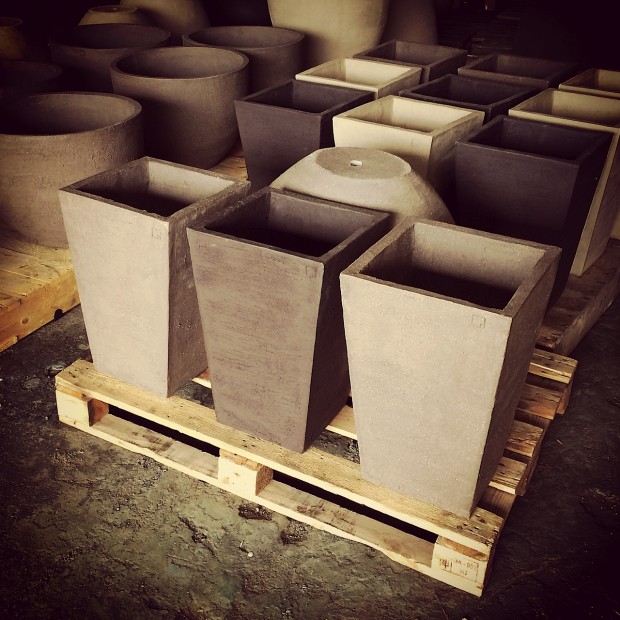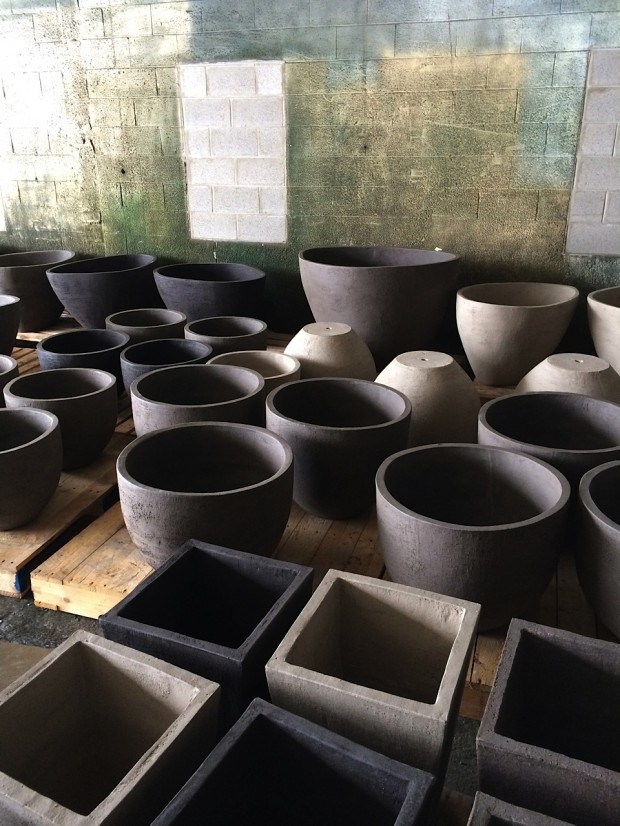 The tulips at the shop have been evolving over the past 3 weeks, when the first of them came into bloom. How appropriate that they are usually about in full bloom on Mother’s Day. My Mom would have loved it, and photographed them over and over again. I came in early today, so I could take my own pictures. I always plant a mix in front of the shop, as I plant lots of them. A minimum of three colors will make a good basic mix.
The tulips at the shop have been evolving over the past 3 weeks, when the first of them came into bloom. How appropriate that they are usually about in full bloom on Mother’s Day. My Mom would have loved it, and photographed them over and over again. I came in early today, so I could take my own pictures. I always plant a mix in front of the shop, as I plant lots of them. A minimum of three colors will make a good basic mix.
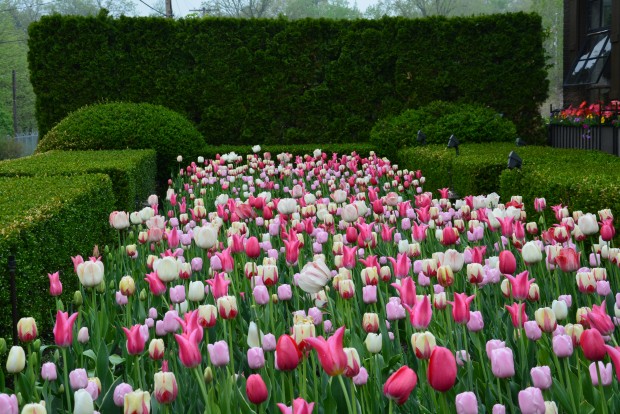 There are other characteristics besides color that make up a good mix. A mix of heights rewards the eye with flowers up, down, and in the midsection. All the same type or class of tulips puts all the flowers at the same height. No matter whether you plant 20 or 200 tulips, there will be a horizontal band of green at the bottom, and a horizontal band of color at the top. Tulips have big, splashy flowers, but I like to plant them close together. Choosing tulips of different heights means the individual flowers will read.
There are other characteristics besides color that make up a good mix. A mix of heights rewards the eye with flowers up, down, and in the midsection. All the same type or class of tulips puts all the flowers at the same height. No matter whether you plant 20 or 200 tulips, there will be a horizontal band of green at the bottom, and a horizontal band of color at the top. Tulips have big, splashy flowers, but I like to plant them close together. Choosing tulips of different heights means the individual flowers will read.
 Different classes of tulips bloom at different times. Creating a good mix of times is not quite as simple as planting an early, a mid season, and a late tulip. A mix whose early tulip is finished before the mid season tulip comes on means the whole group will never be in full color for that one moment of tulip glory. For that reason, I usually include smaller numbers of a 4th and 5th-and maybe even a 6th tulip.
Different classes of tulips bloom at different times. Creating a good mix of times is not quite as simple as planting an early, a mid season, and a late tulip. A mix whose early tulip is finished before the mid season tulip comes on means the whole group will never be in full color for that one moment of tulip glory. For that reason, I usually include smaller numbers of a 4th and 5th-and maybe even a 6th tulip. 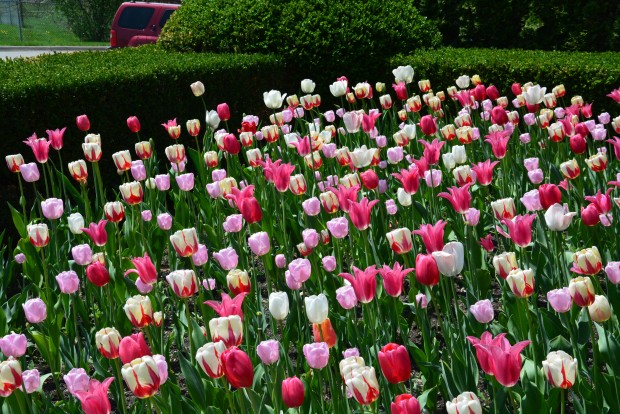 Different types of tulips have different shapes-of course. The classic mid season Darwin hybrid tulip flower is tall, and globular. Single late tulips are very large, and more rounded in shape than the Darwins. Lily flowered tulips have a lily shape-of course. A variety of shapes keeps the mix interesting.
Different types of tulips have different shapes-of course. The classic mid season Darwin hybrid tulip flower is tall, and globular. Single late tulips are very large, and more rounded in shape than the Darwins. Lily flowered tulips have a lily shape-of course. A variety of shapes keeps the mix interesting.
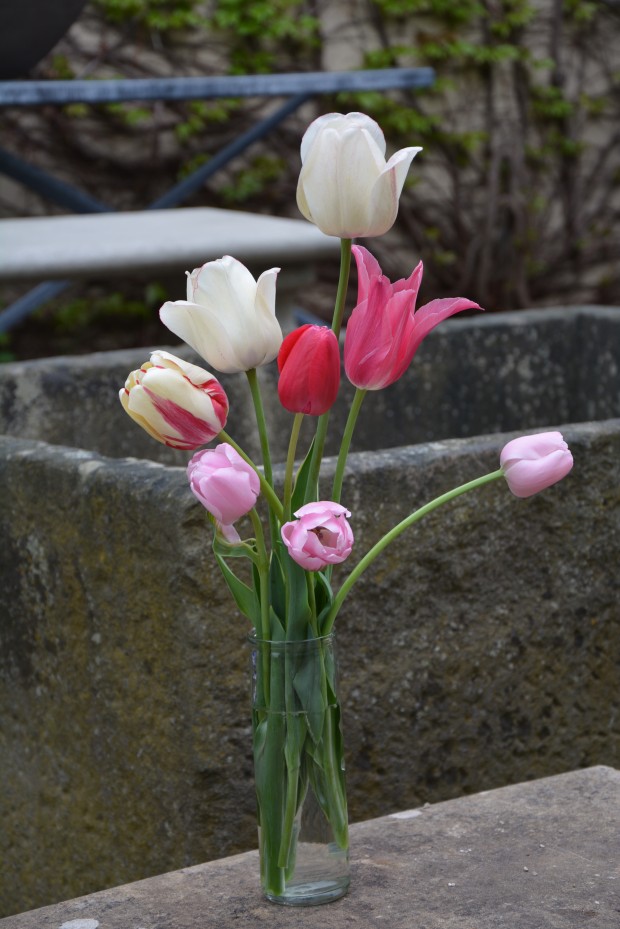 Of course color plays a big part of the mix. Strongly contrasting colors makes for a very lively mix. Bright orange, bright yellow and white is a striking and dramatic mix. That drama can be left as is, or tempered with pale yellow and peach. Pale violet or lavender added to this mix tones down the heat in a visually interesting way. Red would heat up the mix. Leave out the white, the mix will smoulder. 1 part white to 1 part red yellow and orange will be sunny in a very springlike way.
Of course color plays a big part of the mix. Strongly contrasting colors makes for a very lively mix. Bright orange, bright yellow and white is a striking and dramatic mix. That drama can be left as is, or tempered with pale yellow and peach. Pale violet or lavender added to this mix tones down the heat in a visually interesting way. Red would heat up the mix. Leave out the white, the mix will smoulder. 1 part white to 1 part red yellow and orange will be sunny in a very springlike way.
Colors that are closely related make for a harmonious mix. Red and pink is a natural combination, as pink is red mixed with white. In this scheme, there is a near warm white, a white flamed pink and red, a pale pink, a single late rose pink/red, and a medium pink.
 The varieties, from left to right: World Expression, Silver Stream, Renown and Mariette, with Pink Impression at the bottom.
The varieties, from left to right: World Expression, Silver Stream, Renown and Mariette, with Pink Impression at the bottom.
 There can be great color variations within an individual tulip. Pink impression is a pale pink with blue overtones. The midrib of each petal is darker than the body, and the edges of the petals are lighter than the body.
There can be great color variations within an individual tulip. Pink impression is a pale pink with blue overtones. The midrib of each petal is darker than the body, and the edges of the petals are lighter than the body.
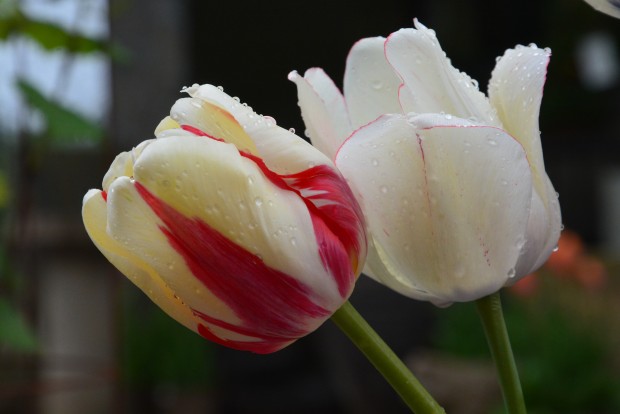 World Expression and Silver Stream have the same two colors, though the color distribution is very different. I think each of these tulips is all the better for its respective companion.
World Expression and Silver Stream have the same two colors, though the color distribution is very different. I think each of these tulips is all the better for its respective companion.
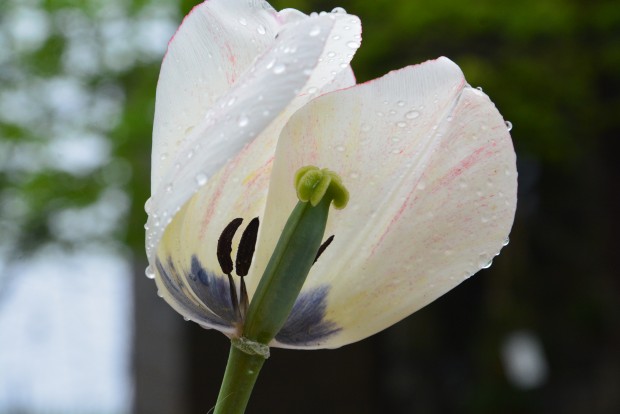 The blooming of the tulips from start to finish is about 5, maybe 6 weeks. I thoroughly enjoy that process, from the time the leaves emerge from the ground, until the last of the petals mature and fall. The flowers themselves are extraordinary. I would always plant tulips for my Mom for Mother’s Day. I would do my best to plant when she was not there, so she would not know what colors or where I would plant. I also schemed to be sure that the tulips were at their perfect best on Mother’s Day. Though I rarely met that goal perfectly, the process of the selection, the planting, the anticipation of spring, and the blooming was a process we both enjoyed. I so appreciate that every time I see tulips in bloom, I think of her.
The blooming of the tulips from start to finish is about 5, maybe 6 weeks. I thoroughly enjoy that process, from the time the leaves emerge from the ground, until the last of the petals mature and fall. The flowers themselves are extraordinary. I would always plant tulips for my Mom for Mother’s Day. I would do my best to plant when she was not there, so she would not know what colors or where I would plant. I also schemed to be sure that the tulips were at their perfect best on Mother’s Day. Though I rarely met that goal perfectly, the process of the selection, the planting, the anticipation of spring, and the blooming was a process we both enjoyed. I so appreciate that every time I see tulips in bloom, I think of her.

